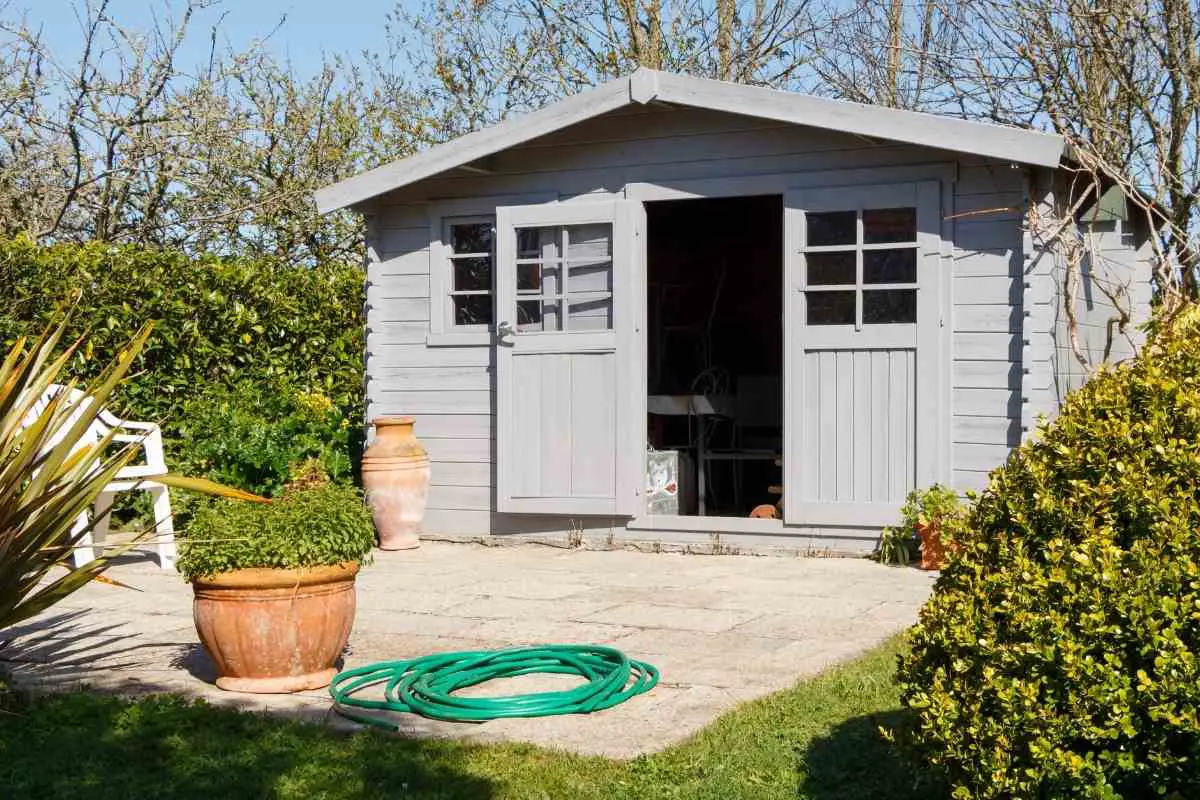Shed gutters come in different sizes, shapes, and colors.
They aid in directing rainwater away from the shed foundation.
If you don’t install a shed gutter, the rainwater will erode the area around your shed, weakening the shed’s foundation.
You can choose the best gutter type you want, but in some situations, you will be limited by factors such as the roof surface area, climate, price, and maintenance.
In Most Cases – Large sheds come with installed gutters, while small sheds might not have a gutter.
However, gutters systems need to be maintained since they can get clogged and damage your roof system, which is way more expensive than maintaining.
After installation, don’t get too comfortable; clean your gutters regularly and unclog the debris inside to keep them running smoothly.
Do You Need To Install One On Your Shed?
If you just bought or built a shed, you might be wondering if it is essential to install a shed and how you should get the job done.
Yes, the installation of gutters is vital to any shed size.
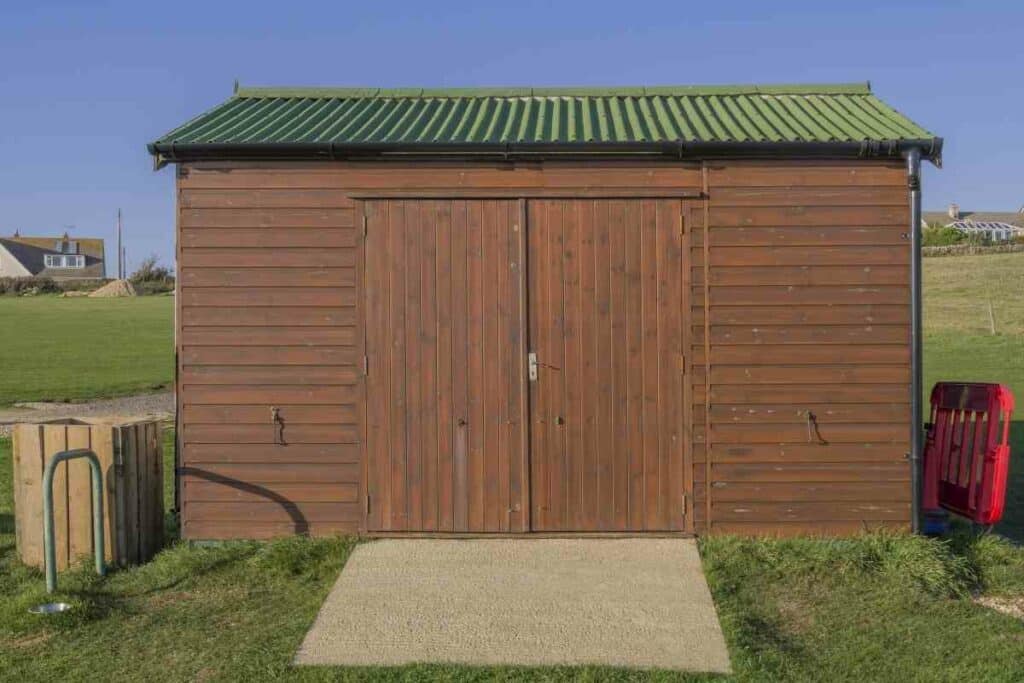
It might take time for you to notice your foundation getting damaged or your wood rotting from the rainwater but it will eventually happen.
Here are some reasons you should install a gutter system in your shed:
- Prevent soil erosion: If the soil around the shed is moving away or some small holes are forming due to the dripping water from the roofs, you have to install a gutter. If the soil erosion continues, it will be dangerous to your shed since it weakens its foundation.
- Prevent damaging the interior: Stagnant pools of water will damage the wood. It takes time for you to notice your shed wood getting damaged by the water, and once you notice, it will be too late. The wood will show signs of rotting and fading from the standing pools of water. Once you notice such signs, you should call a professional to repair and replace the wood.
- Protect your shed foundation: Even though you have raised your shed a few meters up, the water can erode the base, and your shed might end up tilted or even topple over.
- Gutters will save on water: install gutters and divert the water into a rain barrel. You might get surprised how rainwater will fill up a container and save you some extra money to buy water.
Types Of Gutters You Can Install On Your Shed
1. Aluminum Gutters
Aluminum is the most common type of gutter installed in homes or sheds.
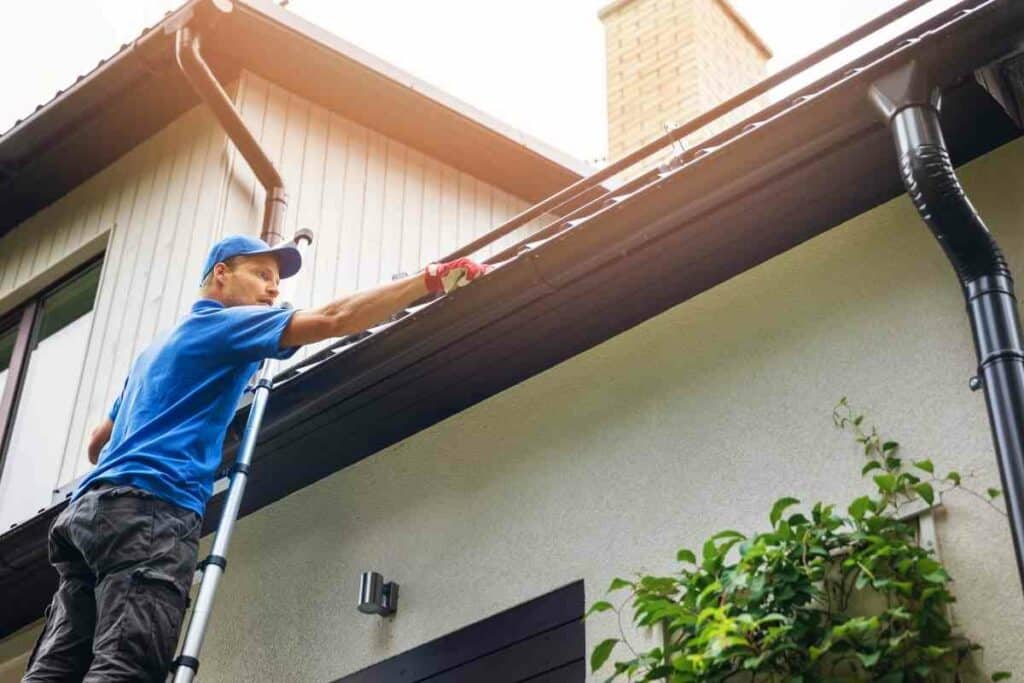
They are durable and come in different colors; that is why most homeowners prefer them.
Aluminum gutters are made of different lengths by the contractor depending on your roof length without adding any seams.
However, they are more expensive compared to vinyl.
2. Wood Gutters
Wood gutters are not a standard option for most people since they are difficult to maintain and expensive compared to aluminum and vinyl.
You will have to clean them more frequently than the other type of gutters. Also, excessive debris will induce rot quickly if not taken care of as soon as possible.
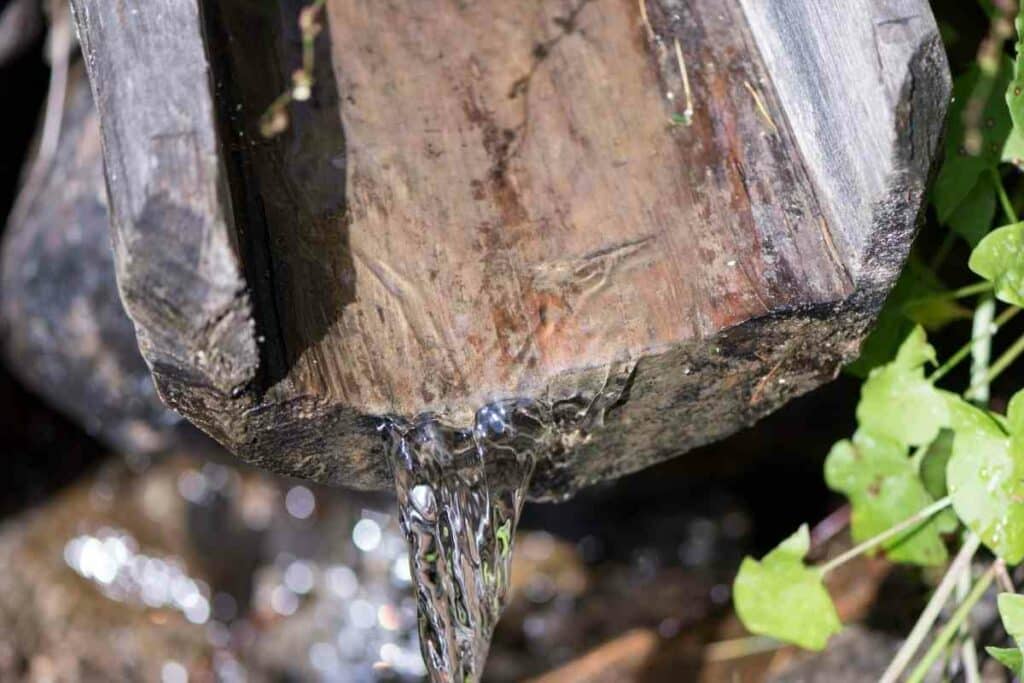
Moreover, you will have to oil them annually or twice a year with heavy-duty oil to ensure the gutter last long.
Most people clean their gutters twice a year, but you will have to clean them more frequently for wood gutters.
That said, wooden gutters have a more profound aesthetic effect compared to others.
3. Vinyl Gutters
Vinyl gutters are easy to install and cheap.
They are readily available at any home reno store and come in hand with accessories such as:
- caps
- gutter brackets
- and drain pipes
This makes them very popular among homeowners.
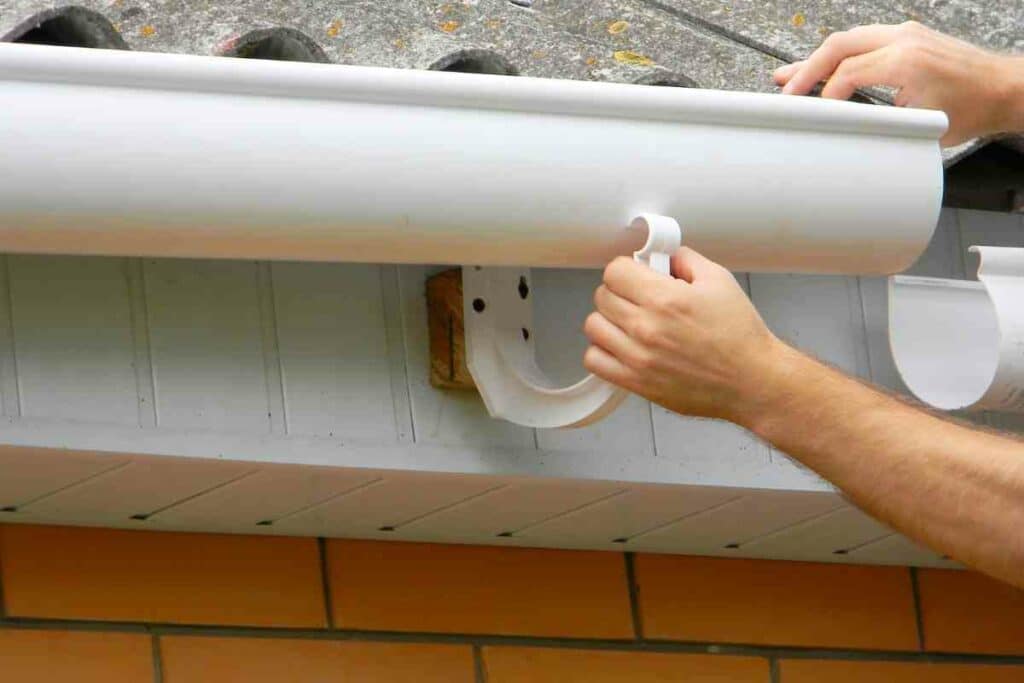
However, they are not durable as other gutter types since they are prone to cracking from extreme weather conditions.
Additionally – Vinyl gutters look cheap due to their color, shape, and plastic look; thus, this is not a good option if you want an expensive look on your shed.
4. Mini Gutters
Mini gutters come in all types of materials.
Depending on whether you have a fascia board, they have their brackets and claps.
They work best for sheds with a small roof surface area and regions that don’t receive heavy downpours.
Heavy rainfall might overweigh the small gutters, especially those smaller than three centimeters in diameter.
Mini gutters come in a kit that makes it easier for you to install a gutter all by yourself since all its accessories and fasteners are in the kit.
How Do You Install Gutters In Your Shed?
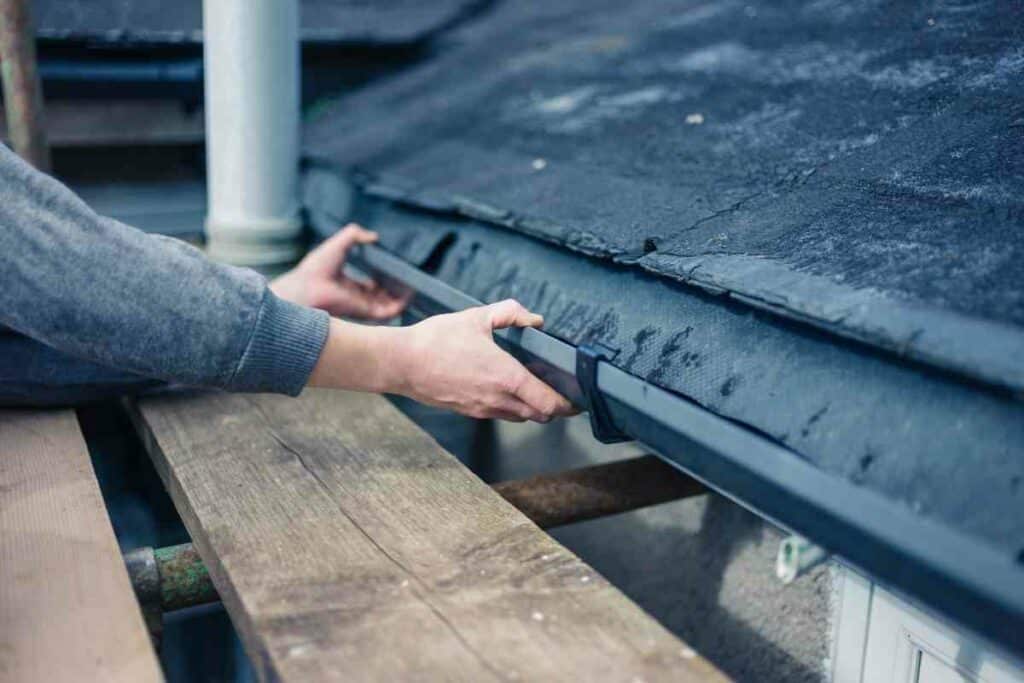
To install a gutter system, you will have to consider the best location to install the downspout since your layout must slope toward the water outlet.
If you feel you can’t do the job, you should hire a professional to do the work for you.
Design Your Guttering Systems As You Want
The type of system you go for depends on several factors, such as if you have a fascia board.
If you don’t have a fascia board, you will be forced to use clamp-on gutters or traditional methods to install your gutter system.
The amount of rain you get also affects your gutter design. If your area receives a lot of rainfall, you will need wide-diameter gutters and vice versa.
The type of climate also influences the gutter system you install.
Melting and freezing of water can stress the gutters and wreck them. Vinyl is not the best option for such conditions as it can get easily weighed down.
Mark The Areas Where You Are Going To Place Your Gutter Brackets
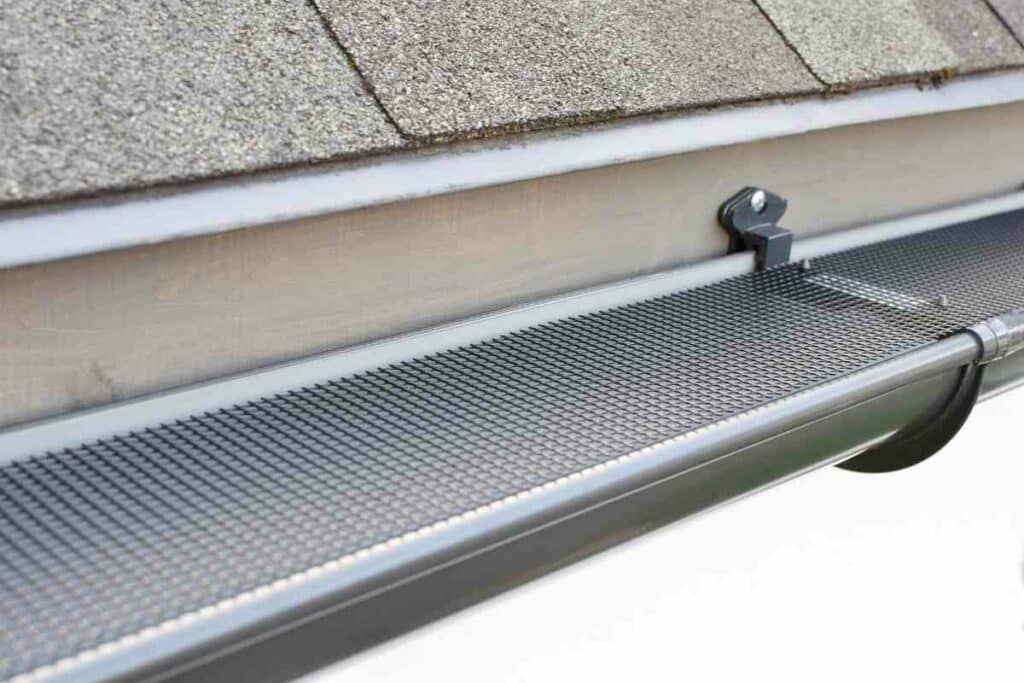
Mark the location where your gutter brackets will be placed.
Either on the fascia board or along the shed roof using straps. Place them three feet apart from each other.
If you live in an area with snow, ice, or your roof will have excess debris, place the straps or brackets two feet apart to sustain the weight of the ice.
When marking the bracket locations, remember to mark along with the downspout.
You are supposed to angle the guttering systems towards the downspout so the furthest bracket will slope down towards the spout for easier water flow.
Cut The Gutters And Join Them
Cut the gutters at the right length accurately.
Ensure you have connectors if you need to join two gutters simultaneously.
Caps are also crucial at the end of the guttering system to make sure the water is directed towards the downspout.
If you prefer to use aluminum gutters, you can send your roof length details to your contractor to build accurate gutter lengths for your roof.
Install The Downspout
Install a downspout at the end of your guttering.
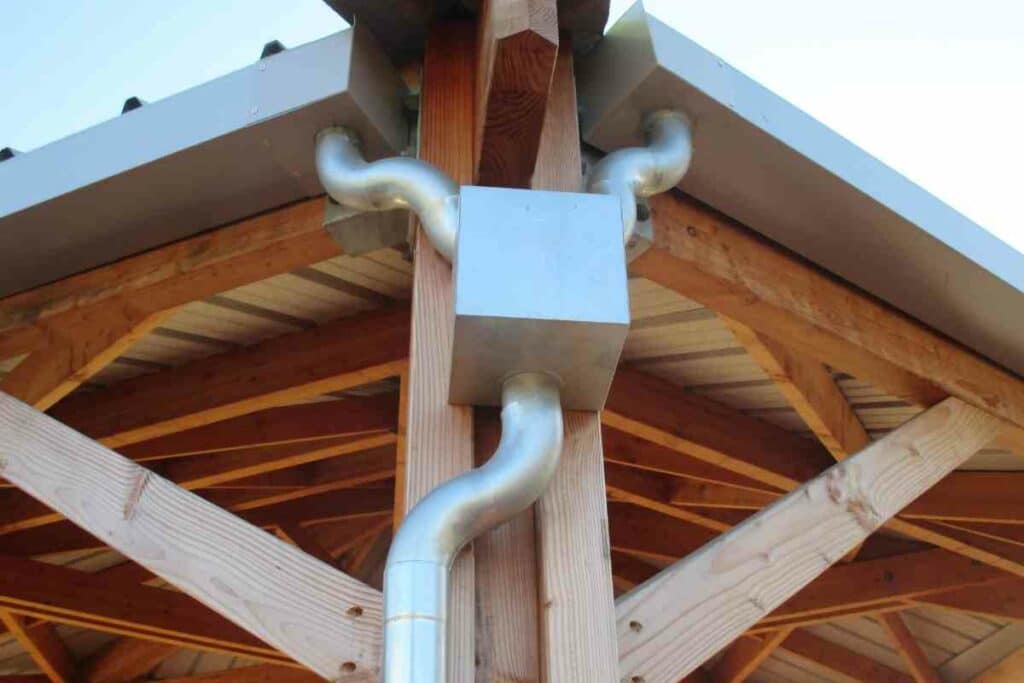
The downspout should be at the lowest slope of your guttering to avoid the water flooding the foundation.
Do not install the downspout vertically from the gutter to the ground since it will leave it hanging away from the structure.
Use a few downspout elbow pieces to direct it where you want it to go. Install a flexible pipe for easy control of the water at the outlet.
Final Thoughts
Gutters are of great help to your home or shed since they protect your foundation and save water.
Additionally, gutters keep your shed in good condition. Installing one is relatively easy since it requires a few technical skills and knowledge.
Lastly, when choosing a gutter system, do not always go for aesthetics- instead, you should be more concerned about its functionality.
Choose the best type of gutters that fit your environment and intended use.
